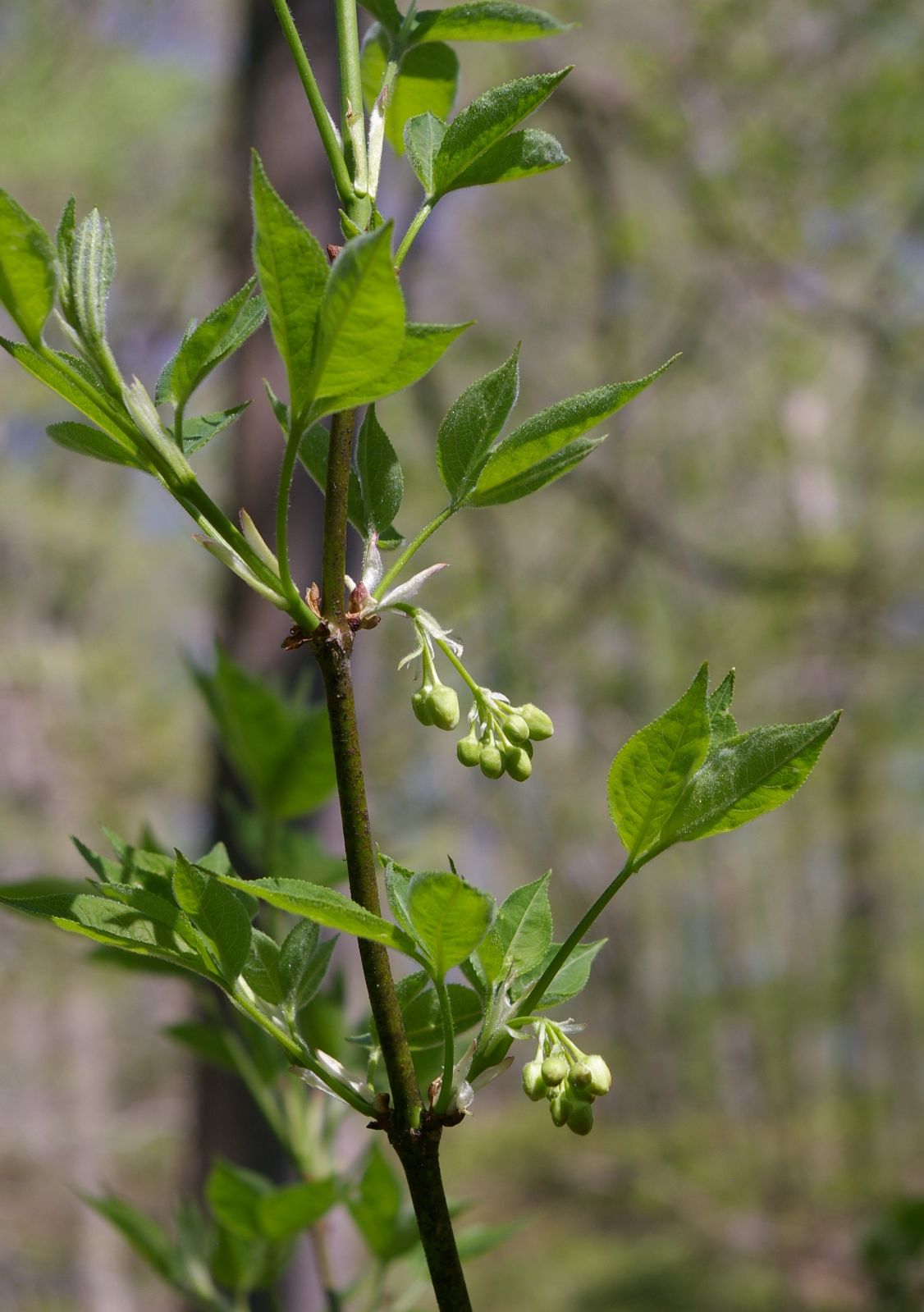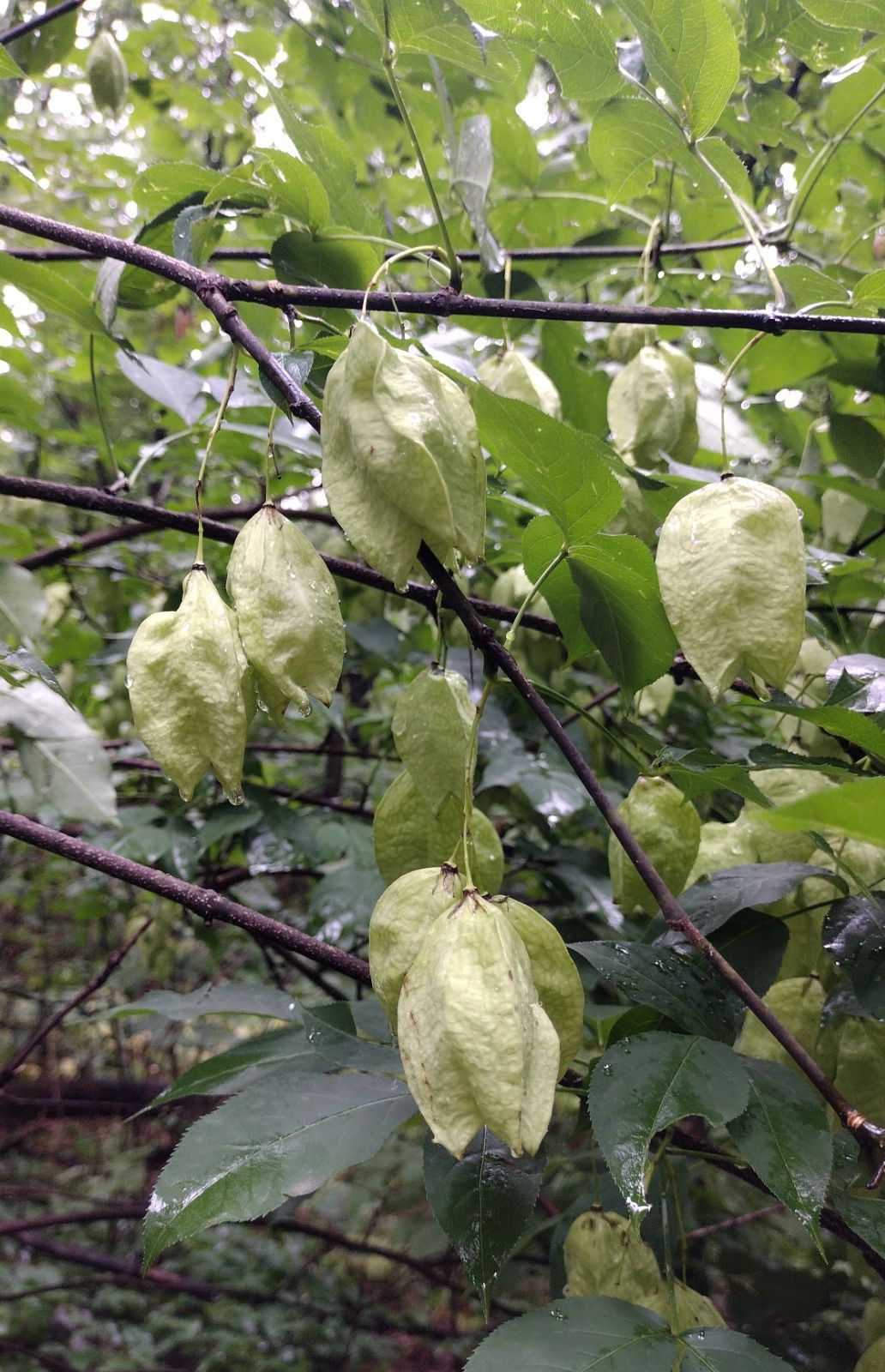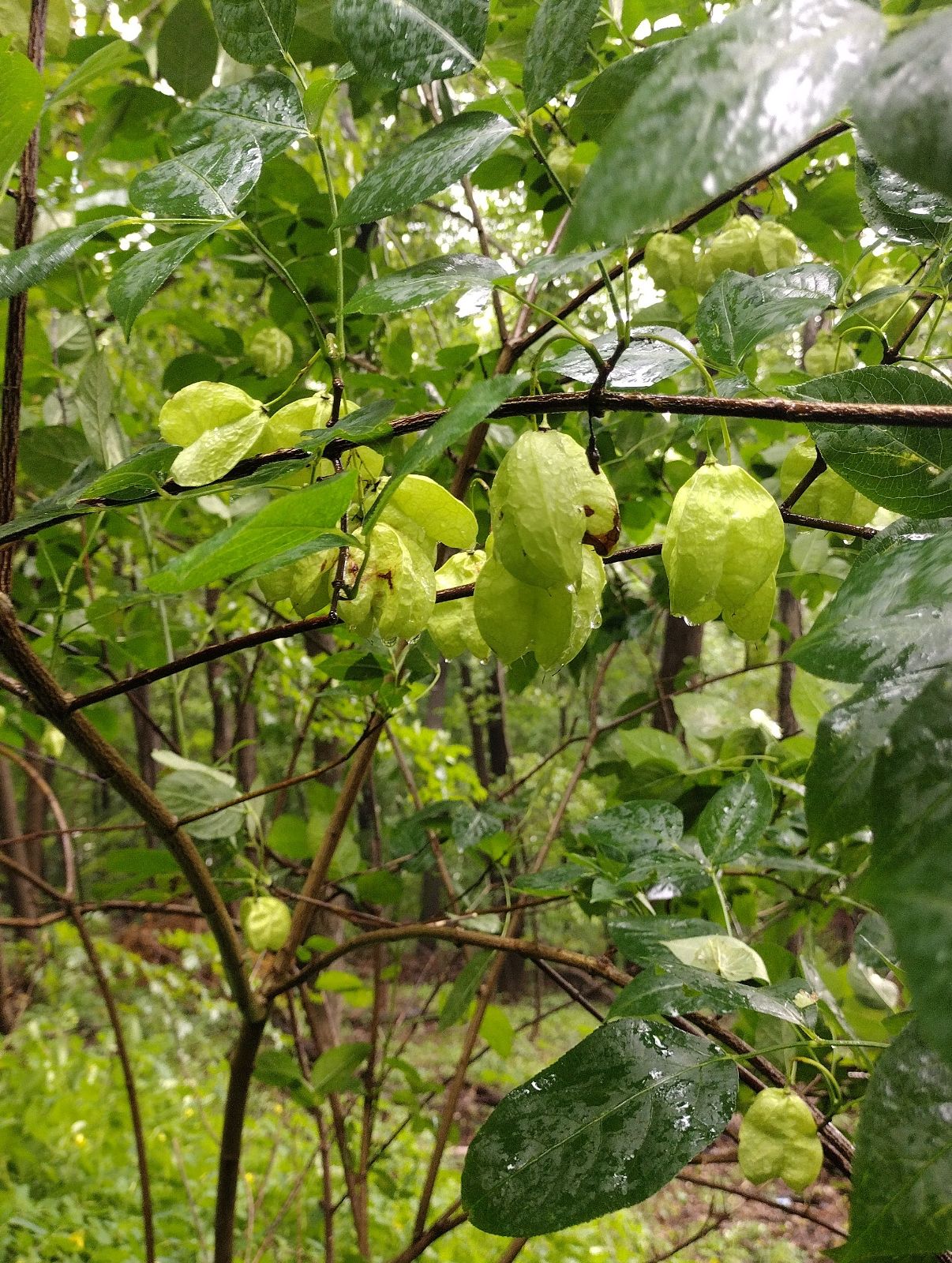Staphylea trifolia
Sponsor
Kindly sponsored by
Giles Coode-Adams
Credits
John Grimshaw (2018)
Recommended citation
Grimshaw, J. (2018), 'Staphylea trifolia' from the website Trees and Shrubs Online (treesandshrubsonline.
Genus
Common Names
- American Bladdernut
Suckering shrub 2–4(–5–9) m. Leaves with 3 or occasionally 5 leaflets; dark green and glabrous or sparsely hairy above, downy with pale hairs below: leaflets 4.5–13 cm, elliptic to broadly obovate, margins serrulate to serrate, apex acuminate. Flowers bell-shaped; sepals pale greenish, greenish pink to pale pink to whitish, 4–7 mm; petals spathulate, 6–8 mm, apex recurved; filaments not or barely exserted, 6–8 mm, equal to or slightly longer than petals, basally villous; styles villous, more or less equal to stamens. Capsules obovoid, 3–5 cm, with three locules: seeds yellowish, 5 mm. Flora of North America, Krüssmann (1986), Bean (1981).
Distribution Canada Ontario, Quebec, United States Alabama, Arkansas, Connecticut, Delaware, D.C., Florida, Georgia, Illinois, Indiana, Iowa, Kansas, Kentucky, Louisiana, Maryland, Massachusetts, Michigan, Minnesota, Mississippi, Missouri, Montana, Nebraska, New Hampshire, New Jersey, New York, North Carolina, Ohio, Oklahoma, Pennsylvania, South Carolina, Tennessee, Vermont, Virginia, West Virginia, Wisconsin.
Habitat Deciduous forests, often humid, often at bases of rocky slopes, floodplain woods, thickets, stream banks; 0–1000 m.
USDA Hardiness Zone 4-8
RHS Hardiness Rating H7
Conservation status Not evaluated (NE)
Taxonomic note The relationship of Staphylea trifolia with the northern Mexican S. pringlei S. Watson remains to be determined (Flora of North America). A plant labelled S. trifolia f. pyriformis is cultivated at Kew and the Sir Harold Hillier Gardens, but the name does not appear in the literature.
Although usually a shrub of moderate height, S. trifolia can become a small tree up to 9 m tall, but as Sternberg (2004) notes it is usually an inconspicuous understorey species. Similarly, in the garden it has little presence – ‘not a highly valued garden plant’ according to Krüssmann (1986), on account of its dowdy flowers, and although cultivated in Europe since the early seventeenth century it is seldom seen. Its downy leaves at least make it recognisable.



